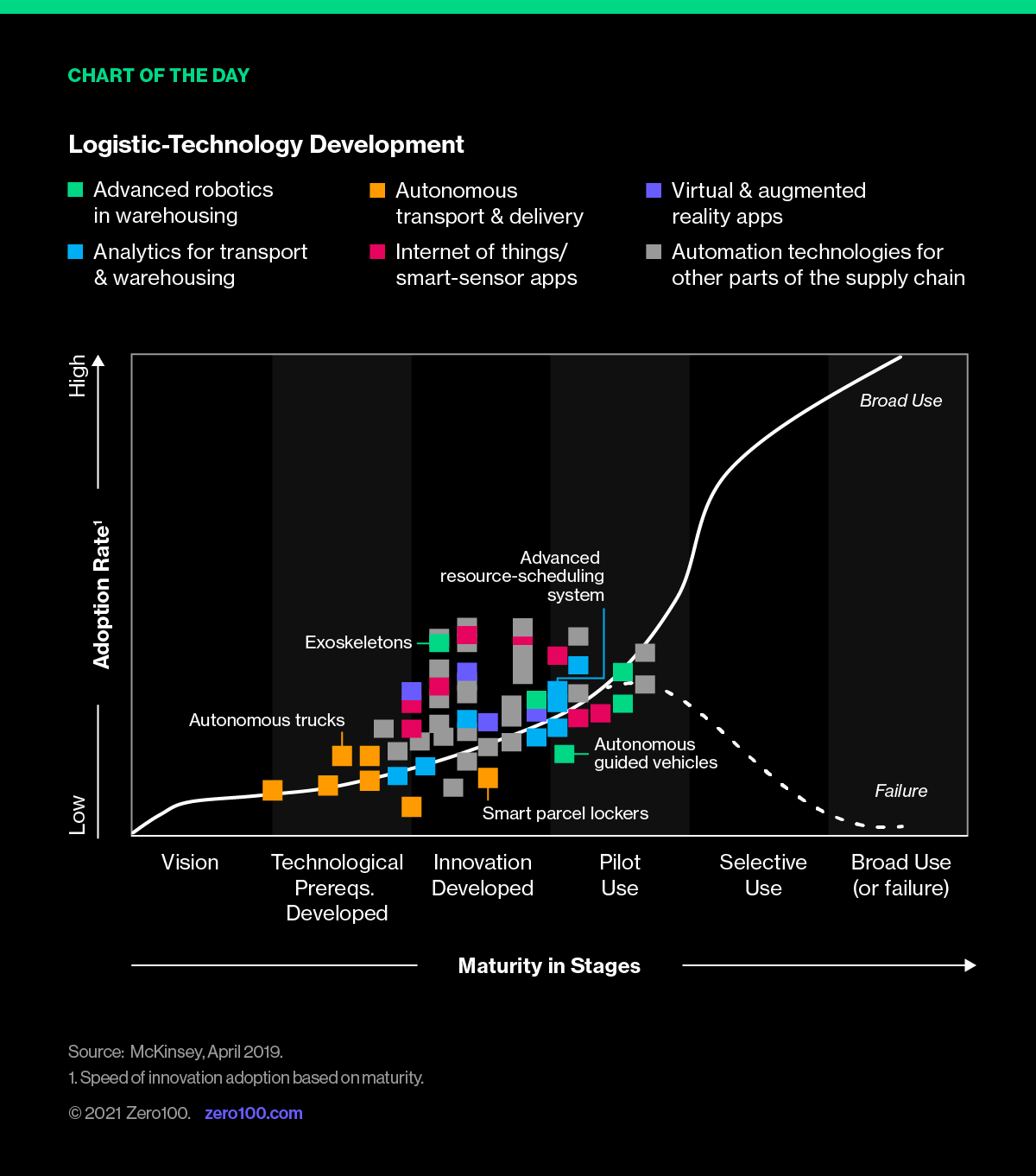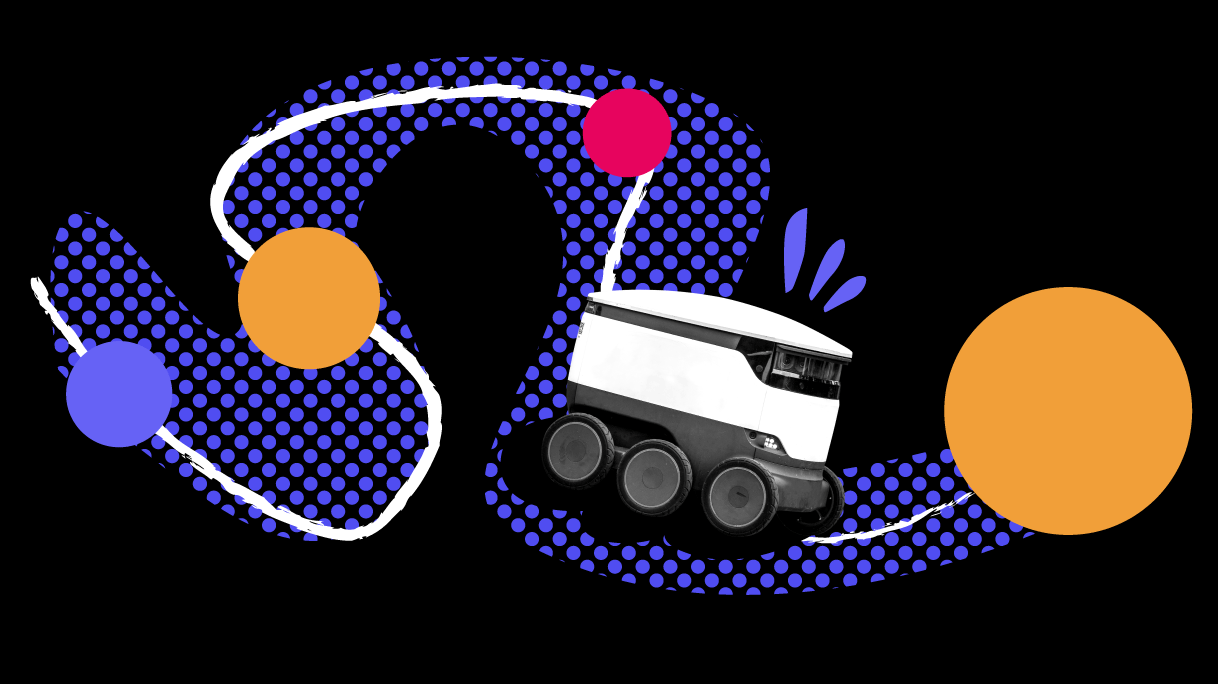Ah, the last mile. The topic of legends, of harrowing allocation battles, of (near) misses and more-often-than-not, of heroic wins.
At least, that's how we see it in supply chain. The rest of the world? These days? Not so much.
Maturing technologies are bringing new versions of the last mile into reality. These new versions offer more choices to meet our customer commitments, more options for risk mitigation and – let's be honest – new bragging rights among our fellow SC pros.
To take advantage of what's possible, we'll need to break a few assumptions we have about how last mile works today.
Assumption 1: Autonomous Vehicles are Only for Long Haul
Autonomous and electric semis got a lot of attention this week – from the PepsiCo Tesla deal to the successful IPO of Rivian. Autonomous semis in particular offer a strong alternative to conventional long-haul trucking by removing the need for fossil fuels, drivers, and a good portion of traditionally required maintenance. Because of safety concerns of the new technology, autonomous semis have been reserved for long-haul lanes.
The star of this week's news is Walmart's use of fully autonomous (sans safety driver) last mile delivery milk runs to fulfill buy-online-pick-up-in-store grocery orders. Vehicles are from Gatik who say they can reduce logistics costs by 30%, a welcome relief for a thin-margin industry like grocery.
We see additional innovations from newcomer Tortoise, which is taking groceries all the way to the customer's home in Northern California, as well as Starship Technologies in Milton Keynes, UK.
These early concepts will pave the way for serving the sustained growth in online shopping, up nearly 60% since pre-covid times and perhaps even support the reshore-curious as they analyze their way to new, decentralized network designs.
Assumption 2: Tracking Materials Depends on the Packaging
Success at the last mile is enabled by the ability to know where our materials are and anticipate customer questions. But knowing where our materials have been is a challenge without leaning heavily on packaging to carry barcodes or IoT devices with this information.
When considering a manufacturing process that uses liquid or gas, we can often only guess at the material origin of the outputs by using mass balance.
Out of Melbourne this week we see a new technology option for tricky track and trace. Product tagging company Security Matters uses a hidden chemical-based 'barcode' technology that gives a permanent mark to any material including solids, liquids, and gasses.
This technology puts a spotlight on digital for a zero-waste future. In the final mile, consumers want to know more than ever about the products they purchase. As we imagine a world that goes beyond the final mile with PaaS models, material circulation, or simply new regulation - this type of marking is a critical input to evaluating the viability of materials for reuse and remanufacture.
Assumption 3: Concrete's Bad, but What Else is There?
The increased use of cloud in supply chain is great for transparency of logistics, but bad for the planet, as servers take a lot of a cement, and cement is on the naughty list for carbon emissions.
To tackle this, Microsoft announced this week their exploration into the ability to grow data centers with biology rather than to create them with cement.
Microsoft has released a report of their findings, which explores different materials such as using algae in a variety of ways. Mycelium is also explored, the wunderkind that has already started replacing plastic foam packaging by using agriculture byproduct and growing packaging with mushrooms.
These bio-factured materials can offer carbon negative options while also reducing the risk of planet-originating inputs. The potential for this expands beyond data centers and create new options for any facility build across the infrastructure getting built or repaired in the coming months.
Creating New Assumptions for the Last Mile
Last mile technologies are rapidly expanding past consumer focused QR codes and into viable and beneficial supply chain capabilities. As the holiday crunch passes and we emerge soon into 2022, now is the time to create a new set of assumptions so we can analyze and test out these new technologies.

Critical Reading
BLOOMBERG
What Nutella Teaches Us About Global Supply Chain Risks
Commentary: The popular chocolate spread serves as a showcase for global supply chains, including complex sourcing, risk of supply, and need for better accountability.
#source #accountability
FORTUNE
How Zipcar and DoorDash leaned on A.I. during the pandemic
Commentary: Zipcar and DoorDash give real examples of using AI to pick up the pieces of the demand prediction tools that were broken by dramatic shifts in consumer behavior during the pandemic.
#gigeconomy #artificialintelligence
REUTERS
Retailers lose love for Asia: Snarled supply chains force manufacturing exodus to Balkans, LatAm
Commentary: Textile manufacturers seek haven from ongoing risks be increasing investment into closer-to-user manufacturing footprints, as Vietnam sees a dramatic reduction in garment exports.
#shortsupplychains #manufacturing
